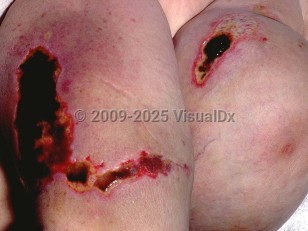Heparin necrosis
Alerts and Notices
Important News & Links
Synopsis

Codes
D68.32 – Hemorrhagic disorder due to extrinsic circulating anticoagulants
SNOMEDCT:
293334006 – Heparin adverse reaction
Look For
Subscription Required
Diagnostic Pearls
Subscription Required
Differential Diagnosis & Pitfalls

Subscription Required
Best Tests
Subscription Required
Management Pearls
Subscription Required
Therapy
Subscription Required
Drug Reaction Data
Subscription Required
References
Subscription Required

